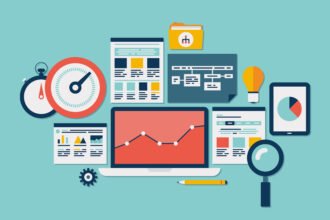The WAA renamed itself to DAA (which was announced at eMetrics in San Francisco last Monday) to reflect the reality of how the profession/industry has grown since its website centric origins. That brings up the question what Digital Analytics should stand for?
No doubt, every vendor (including me) and consultant will bellow now that digital analytics are exactly what he/she said all along that companies should be doing with analytics. And it is of course exactly what his/her/my company happens to be offering. ![]()
We’ll also see the more mundane proposition that Digital Analytics is the combination of web, mobile, and social analytics and also includes VOC, benchmarking, email analytics, search analytics, performance, replay, etc.
Nothing wrong with the above.
It’s just that I think Digital Analytics has greater potential than all that.
Namely, as the digital and physical worlds are increasingly intertwined, digital analytics are becoming a key intelligence for business decisions and CRM, not just channel optimization or making page content/layout better.
For example, already in 2009 Macy’s CEO went on record saying that every dollar spent on Macys.com led to $5.77 influenced in stores within the next 10 days. This reflects the well known “research shopper” phenomenon. Since then, Smartphone ownership in the US has crossed 30% of cell phone users and 4 out of 10 have said in surveys they used their phone to get more information on items while in a store.
Likewise, 33% of retailers said in a survey that equipping their store staff with mobile POS capabilities is a key investment coming now. So both buyers and sellers are going to be even more digitally intertwined than they have been in past years.
As a result we should see that an increasing portion of data used in data warehouses, business intelligence, and CRM is digital data.
To be more specific, we are talking about behavioral data and customer , not just transactional data because the latter has been integrated some time ago already.
New cycle of continuous improvement
To bring this to the point, until here the profession of web analytics has often been identified with a continuous cycle of improvement as seen below. We set goals, measure where we stand, test/experiment with alternative content, pick the best design, rinse and repeat.

As all interactions with a business are becoming increasingly intertwined with digital, it is time to embrace the more strategic potential of digital analytics by moving to the cycle below. Here the insights are used either for business decisions or to identify the next most relevant content or product/service/promo offer for each customer based on their current interests.

For example, at emetrics Steve Petitpas from Microsoft shared their analysis that led to the decision to discontinue the Cash incentives program for Bing. Or in Eric Peterson’s whitepaper Dashboards are not a Strategy, the work of The North Face’s Mike Mayfield is described where Mike identified demand for certain products via digital behavioral data and worked with their merchandise buyers to match supply to that demand. Or Freshdirect is using analytics to identify customers’ willingness to pay for different kinds of their 4-minute meals so that they can provide the right price for the market.
Additional analytics skills
More analytical skills are needed than page and ad and conversion optimizers will have employed in our daily work. Good examples would be:
- Kevin Hillstrom’s forensics method for forecasting the long term contribution of any channel or product or “thing”
- Jim Novo’s method for forecasting the level of engagement of an individual in order to optimize e.g. who receives a retargeting incentive vs. who doesn’t
- Gary Angel’s data mining based customer segmentation method to identify different groups of customers that pose different opportunities
- Predictive analytics skills for marketers to score, value, rank, profile interests / risks
Yay, lots to do and learn.
Analytics is fun again!








